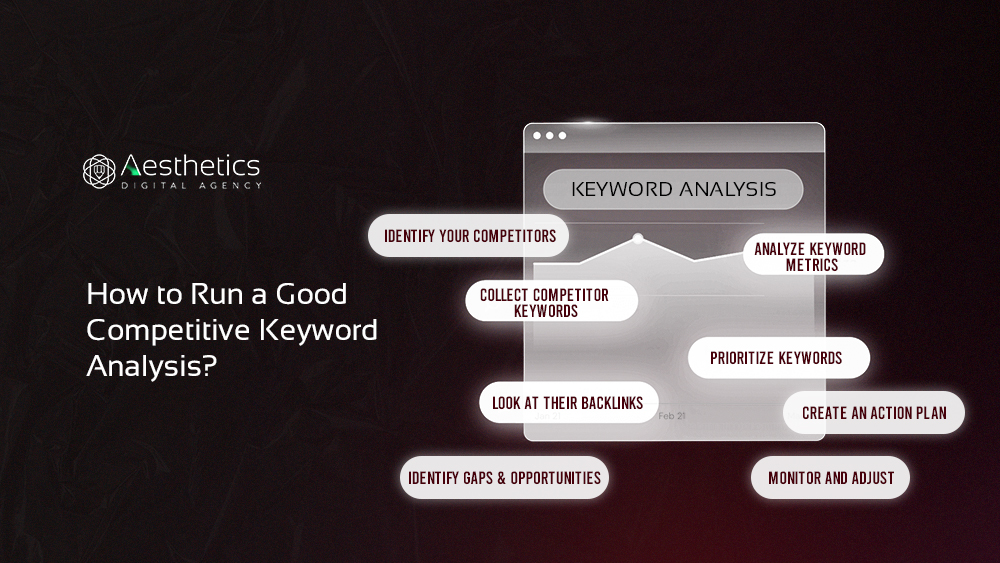Did you know that 93% of online experiences begin with a search engine? With millions of websites and pages competing for attention, it’s crucial to have your content stand out in search results. But how can you ensure that your website is ranking high on search engines? The answer lies in conducting a competitive analysis of keywords.
Keywords are very important when it comes to the process of search engine optimization (SEO). They are the words or phrases that people type into a search bar in google, bing or yahoo among others when looking for information on the internet. Keywords enhance the likelihood of your website to rank high in the search engine result pages (SERPs) when they are inserted into the content of your website.
Take the term “scooter” for example. If you were to search for this term on a search engine, you would see a wide range of results related to bikes. Here, “scooter” is considered a short keyword, which contains one or two terms.
On the other hand, long-tail keywords consist of three or more terms and are more specific in nature:
- short keywords generally cover broad topics
- long-tail keywords provide greater specificity.
A long tail keyword for scooters can be “scooter for girls”
By understanding the difference between these types of keywords through a competitive analysis, you can effectively target your audience’s search intent and improve your website’s ranking in search results.
But how do you know which keywords to use? This is where conducting a competitive analysis of keywords comes in.
What is Competitive Keyword Analysis?
Competitive keyword analysis refers to the evaluation of the keywords that are used in the market by your competitors in order to gain the search engine rankings. This technique involves comparing your own keywords against the keywords of your competitors, to identify areas of weakness in your keyword strategy and potential areas for improvement in your SEO.
According to a study by Backlinko, keywords that are longer and more specific, typically 10-15 words in length, receive 1.76 times more clicks than single-word terms. Additionally, posts that include target keywords or related terms in the URL have a 45% higher click-through rate compared to those without them.
These statistics highlight the importance of conducting a competitive analysis of keywords to improve your website’s visibility and attract more traffic.
How To Identify A Competitive Keyword?
Identifying a competitive keyword is the first step in running a successful competitive analysis. A competitive keyword is usually one that is ranking on your competitors’ sites and which has a high traffic rate. Here’s a step-by-step guide on how to identify a competitive keyword. Let’s use an example to understand this process:
For example, you own an online store that sells organic skincare products. Your top competitor is “Natural Glow Skincare.”
1. Keyword Research Tools
Ahrefs, SEMrush, or Google Keyword Planner are some of the tools that will help you find keywords in your industry. For instance, if you type “Natural Glow Skincare” in SEMrush and discover that they are occupying the top positions for the keyword “best organic face moisturizer.”
2. Analyze Search Volume and Difficulty
Look at the search volume and difficulty for “best organic face moisturizer.” You find that it has a high search volume of 10,000 searches per month and a difficulty score of 65 out of 100.
Search Volume: This is a measure of how many times a keyword is searched in a given time interval, usually monthly. A high search volume means that a large number of people are searching for a particular keyword, and this can mean great visibility if you are on the first page of the search engine results.
Keyword Difficulty: This score gives an indication of how difficult it will be to optimize any given term or keyword. It takes into account factors such as the number of similar pages and the quality of the competing pages. A higher difficulty score means more competition, making it harder to achieve a high ranking.
The keyword “best organic face moisturizer” is quite popular with 10,000 monthly searches. This high number of queries means that a lot of people are concerned with searching for information or goods about organic face moisturizers. The specific keyword can attract a lot of traffic to your site if you rank well for it.
A difficulty score of 65 out of 100 suggests that it is relatively challenging to rank for this keyword. Many high-quality websites are likely competing for this term, and they have strong SEO strategies in place. To compete, you will need to create exceptional content and possibly build a strong backlink profile.
Check Competitor Rankings
Check which keywords “Natural Glow Skincare” is ranking for besides “best organic face moisturizer.” You see that they are also ranking for “organic face cream for sensitive skin” and “natural anti-aging moisturizer.”
Evaluate Relevance
Make sure these keywords are appropriate to the business that you are in. Since you also sell organic skincare products, these keywords are good to use, and will attract customers to your site. While a keyword may attract a lot of traffic and the competition is equally high, if the keyword does not relate to your products or services in any way, then it will not help your SEO plan.
How to Run a Good Competitive Keyword Analysis?

Running a good competitive keyword analysis involves a systematic approach to gathering and analyzing data.
Identify Your Competitors
First of all, it is necessary to identify the direct and indirect competitors. Direct competitors are those that provide similar goods and services to the target market while indirect competitors may sell different goods but to the same market.
How to identify competitors
Google Search: Type in your main keywords and you will know who is visible on the first page.
Industry Reports: Stake out market analysis reports of your business line.
Tools: Select the competitors based on the keywords that the tools, SEMrush, Ahrefs, or Moz, display for a particular URL.
Collect Competitor Keywords
After you have established who your competitors are, the next process is to get the keywords that your competitors are ranking for. This will enlighten you on what they are doing concerning SEO and the opportunities that you can take advantage of.
Methods to gather competitor keywords
SEO Tools: To do this type of analysis, you can use tools such as Ahrefs, SEMrush or Moz to perform a keyword analysis from the competitor URLs.
Website Analysis: Competitor research where you look at the HTML source code of competitor websites and note the meta tags, headings, and content for the most frequently used keywords.
- Analyze Keyword Metrics
With a list of competitor keywords in hand, analyze the following metrics to determine their value:
Search Volume: Indicates how often a keyword is searched. Aim for keywords with substantial search volume but manageable competition.
Keyword Difficulty: A measure of how hard it is to rank for a keyword. Look for keywords with lower difficulty to find easier opportunities.
CPC (Cost Per Click): Shows how much advertisers are willing to pay for a click on the keyword. High Cost per click often indicates a high-value keyword.
Identify Gaps and Opportunities
Search for weaknesses in your competitors’ keyword plan. Could there be many keywords that they use frequently but they are not optimizing for? Is it possible that there are still long-tail keywords that have low competition but are highly related to your line of business? These gaps can be opportunities for you to gain an edge.
Identifying these gaps allows you to target keywords that can boost your search engine rankings and traffic.
How to identify keyword gaps
Gap Analysis Tools: Use tools like Ahrefs’ Content Gap or SEMrush’s Keyword Gap to compare your keyword profile against competitors.
Manual Comparison: Write down your best keywords and then compare them to your competitors manually to find the differences.
Prioritize Keywords
Here one must also remember that not all keywords are the same. Prioritize keywords based on:
Relevance: Make sure the keywords are applicable to your business and the target market.
Achievability: Concentrate on the keywords that have a probability of ranking according to the domain authority and present ranking.
Potential Impact: Target keywords that will attract good traffic and that can lead to good sales.
Look at their backlinks
These are links that exist on other sites pointing to your competitor’s site. From their backlinks, one is able to evaluate the kind of content that they are producing as well as the keywords that they use in order to acquire these backlinks.
How to analyze competitor backlinks:
Use SEO Tools: Using Ahrefs, SEMrush or Moz one can see the backlink profile of any website, including the fresh ones. You should enter the URL of your competitor to check the list of backlinks of this web page.
Identify Top Linking Sites: In addition, focus on the competitors’ backlinks and try to find websites with high authority that link to your site. This can suggest potential partners and clients for your backlinking strategy in the future as well.
Analyze Anchor Text: The anchor text used in the backlinks will help you know the keywords that your competitors are using. This can help you assess your keywords and find out what you are missing in your own keyword strategy.
Examine Content Types: Here you should pay attention to what kind of content tends to get the most links, like a blog post, infographic, or case study. This can be valuable to your content generation process to create similar backlinks.
Look for Link-Building Strategies: Determine whether your competitors are using specific link-building strategies, such as guest posting, partnerships, or content marketing. This can provide ideas for your own link-building efforts.
Create an Action Plan
Your prioritized list of keywords should be used in the formulation of your content plan. These are keywords that should be incorporated in the content that you are creating so as to ensure you are giving your audience the much needed information.
Content Strategy Tips
High-Quality Content: Produce well-researched, informative, and engaging content.
On-Page SEO: Optimize your content with proper use of keywords in titles, headings, meta descriptions, and body text.
Regular Updates: Keep your content updated to maintain relevance and rankings
Monitor and Adjust
SEO is not a ‘set it and forget it’ kind of thing. To have a competitive edge, you should constantly check your keyword position and make necessary changes.
Monitoring Tools
Google Analytics: Follow your organic traffic and the keywords you are ranking for.
Adjustments:
Content Updates: Update your information and keywords used in the content.
Link Building: Make your SEO strategy even stronger with a solid link building strategy.
Competitive Analysis: It is recommended that you make a point of checking your competitors more often.
The Benefits of Running a Competitive Keyword Analysis
A competitive keyword analysis has several advantages when performed that would be useful in improving your SEO plans and your company’s online visibility. Here are some key advantages:
1. Improved SEO Strategy
By understanding which keywords your competitors are ranking for, you can refine your own SEO strategy. This understanding enables you to aim for high commercial intent keywords and avoid pursuing low relevance terms. It is also possible to discover other keywords that you never considered before.
2. Better Content Creation
Competitive keyword analysis enables one to know the kind of content that is appealing to the target consumers. That is why, by analyzing the best content for competitive keywords, you can publish more efficient, interesting, and relevant content for visitors.
3. Increased Organic Traffic
Being specific with your keywords can help you increase your organic traffic greatly. Essentially, when you target competitive keywords that also attract many users, you are likely to rank higher in the SERPs hence more traffic to your site. SEO generates over 1,000% more traffic than organic social media.
4. Enhanced Competitive Edge
Understanding your competitors’ keyword strategies gives you a competitive edge. You can identify gaps in their approach, capitalize on their weaknesses, and stay ahead in the SEO game. This knowledge allows you to make informed decisions that keep you one step ahead of your competition.
5. Cost-Effective Marketing
SEO is one of the most inexpensive ways of marketing your business and a competitive keyword analysis enables one to get the most out of the little investment made. This way, the attention to high-impact keywords can be as effective without straining your budget on paid advertising.
6. Better User Experience
When the content you publish is properly focused on the right keywords and it effectively deals with the needs of the target audience, you give them a better experience. Stimulating and relevant content attracts the attention of the visitors, decreases bounce rates and the chances of converting visitors into buyers also go up.
Conclusion
Incorporating competitive keywords into your SEO strategy is essential for standing out in the digital landscape. It is recommended to conduct a proper analysis of your industry and competitors in order to find out which keywords are the most effective and help to optimize the position of your website on search engines.
Do not be left behind by your competitors by neglecting your keyword strategy, but make efforts to refresh your keyword list to increase the traffic and potential customer base to your business. Keep this in mind, keyword analysis is a never-ending process that should be carried out on a regular basis, nevertheless the goal is worth the effort. Therefore, do not forget to run the competitive keyword analysis frequently to keep on the right side of the search engine.







